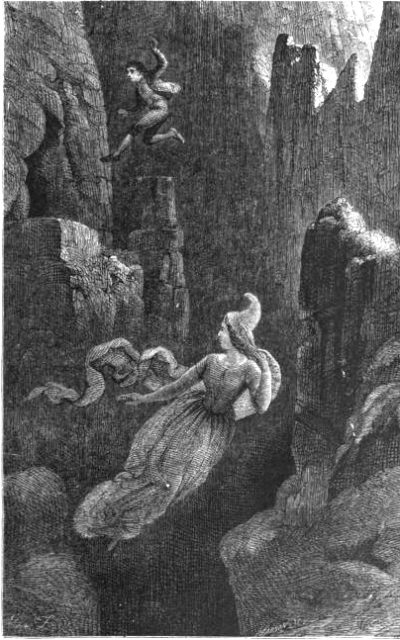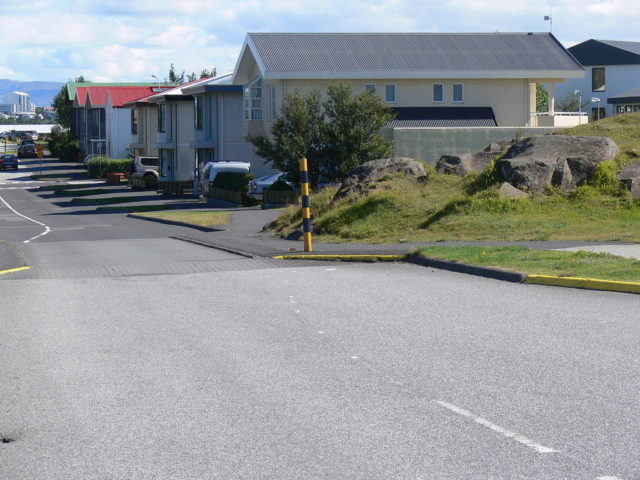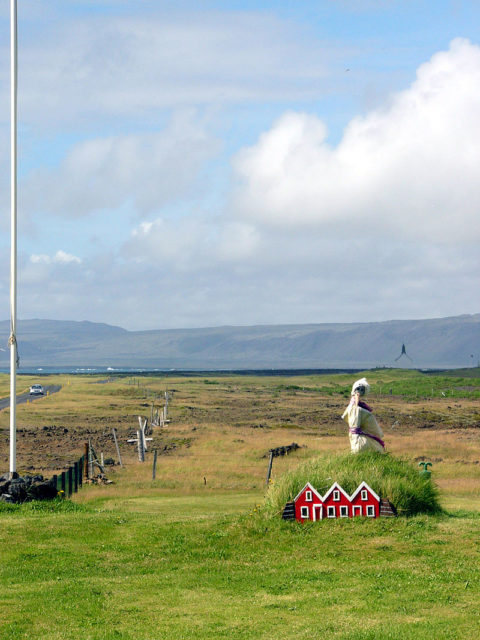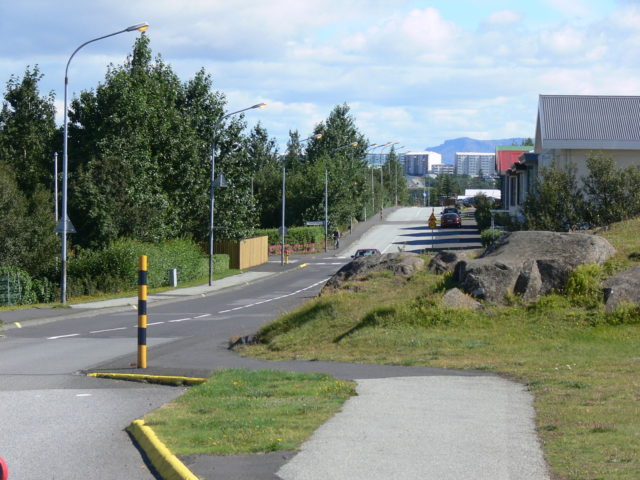In the animated film from 2008, Horton Hears a Who, based on a beloved Dr. Seuss book, Jim Carrey is the voice of the determined elephant that seeks to preserve a tiny community and its residents from the people who refuse to accept their existence. The movie delivers a profound message that everyone’s voice counts, no matter how “small” or irrelevant he or she appears to be.
Similarly, in Iceland, a land where serene landscapes of green fields and silent arctic deserts intertwine with the destructive nature of boiling geysers, howling winds, and fiery volcanic eruptions, it seems as if tiny hidden people have a very serious say in the country’s development. Hidden from the eyes of humans, yet respected by every single one nevertheless, they are Iceland’s Huldufólk, and not one road or house is built without their blessing.
Traveling tourists might be surprised if they happened to come across the peculiar sight of police officers and government officials gathered around a single rock in a ceremonial manner. While honoring the wishes of elves might seem strange to the rest of us, it is a serious matter for Icelandic folks.
Their elves are not Santa’s little helpers nor medieval fairies, but are supposedly real people of different sizes that range from just a couple of inches tall all the way to a full-size human, and they exist alongside the rest of us. Just like us, they too live normal lives, feeding cattle and such, caring for the land, and the land yields them whatever they need to survive in return; they transport themselves by boats and even go to church–buildings which they have built themselves.

According to Professor Jacqueline Simpson from the Sussex Center for Folklore, Fairy Tales, and Fantasy at the University of Chichester in England, the first ever mention in history dates back to as far as 1000 AD, when the Vikings first used the word affar to describe entities of Elvish nature. Yet to her knowledge, the way they are represented today, with elaborate descriptions about their intricate nature, comes from much more recent Icelandic folklore.
“Their economy is of the same sort,” wrote Valdimar Hafstein, a professor and folklorist at the University of Iceland, in his academic paper “The Elves’ Point of View,” adding, “Like humans, they too have priests and sheriffs and go to church on Sundays.” Hafstein’s research found that almost half of the population in Iceland believe in their presence, while the rest, well, he found them rather reluctant to deny it. In his view, as in the view of many others who have investigated this strange “elf-believing” phenomena, the Huldufólk reside in similar dwellings as humans, usually in small houses built around giant boulders or volcanic rocks, and they are naturally friendly, yet also territorial.
“Treat them with respect, do not upset their dwelling places, or try to steal their cattle, and they’ll be perfectly…well, quite neutral, quite harmless,” says Professor Simpson. On the other hand, when they are neglected, disturbed, or disrespected, one usually pays the price for doing so.

“There are many stories of machines breaking down and workers becoming ill when they interfere with elf rocks,” says Bryndís Björgvinsdóttir, the folklorist at the Iceland Academy of Arts in Reykjavik. “They are friendly creatures, but you have to respect them, or they will take their revenge.” Disturbing their dwellings without consulting them first can provoke their territorial side, and bad things might happen as a result, says Simpson, while Hafstein points to countless reports where machines and bulldozers would suddenly stop working without any reasonable explanation whatsoever.
One such occasion took place in the 1970s, when the Icelandic Road and Coastal Administration (IRCA) was attempting to move a rock out of the way and detonate many others to make way for a road to be built in the Skagafjördur district, located in the northern part of Iceland. This was called Road No.75, which would lead directly over Tröllaskard (the Trolls’ Pass). As preparations were being made for the construction to begin, protesters arrived at the site claiming the land was enchanted and the operation should be halted immediately. IRCA representatives were at first surprised to discover that anyone was even aware of their operation. Yet when they heard their bulldozer producing weird noises and eventually break downing inexplicably, the lead engineer, who was reportedly visited by supernatural beings in his dreams warning him to not disturb the peace, sat down with the protesters to hear their story and see what could be done.

The group of men, among whom was Hafsteinn Björnsson, a respected medium from Saudárkrókur, said the rock formation was a site of spiritual importance, an ancient elvish settlement of the Huldufólk, and it should not be destroyed. It was agreed that while the road was a necessity, the destruction of the rocks wasn’t. So they found a middle ground and came to a decision to construct the road around the site, and, if necessary, to relocate some of the rocks delicately.
This resulted in one oddly curved road that now stands as stark evidence of a deal struck between humans and the hidden people, or at least, a testimony of a time when construction workers did everything they could to pay their respects to the locals and their beliefs. It is worth mentioning the peculiar fact that, although the state of the passage is an unnatural one, with many steep curves around the boulders, no serious accidents, nor any other incident, has ever been reported there. There are many who assert that the elves guard the passing drivers against any harm, as a token of gratitude for the understanding and consideration shown to them. “It’s good to make deals with elves, they always keep their bargain” is what almost every Icelander would say.
This was not by any means an isolated incident. Many freakish accidents were reported throughout the past century when Iceland went through significant economic growth and infrastructural changes. While perhaps it seems somewhat laughable, one certainly can’t laugh at a whole nation. A questionnaire administered nationwide in 2007 found that more than 80 percent of people refuse to deny the existence of these supernatural entities.

Nowadays, Iceland is full of houses with a giant boulder in their front yards, roads that split in two around a rock, and a whole lot of other “power” places and enchanted spots, or álagablettir, as locals would call them. And it’s not surprising for a whole nation to develop superstitious beliefs about the supernatural and strange invisible entities who aim to protect not only their “holy” settlements but existing nature as well. “When your house can be destroyed by an earthquake and you can be blown over by the wind, when boiling water from your taps tells you there’s lava not far beneath your feet — then you don’t mess with nature,” said another university professor. It is for this reason that people here express reluctance to make changes to nature, for fear of bringing an ancient elvish curse upon themselves as a result.
“The elves stand for living in harmony with nature and provide a metaphor for living sustainably with the resources we have”, states one architect responsible for constructing a map of marked elvish dwellings in the country. So as long as “issues are settled by delaying construction projects so that the elves can, at a certain point, move on,” projects are not hastened in this nation on the rise, and are debated on whether they are truly necessary.
